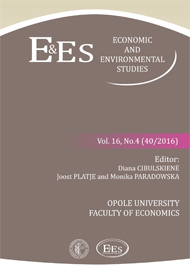Mobility of heavy metals from metallurgical waste in the context of sustainable waste management
Mobility of heavy metals from metallurgical waste in the context of sustainable waste management
Author(s): Kamila MizernaContributor(s): Monika Paradowska (Editor), Joost (Johannes) Platje (Editor), Diana Cibulskienė (Editor)
Subject(s): Economy, Energy and Environmental Studies
Published by: Uniwersytet Opolski
Keywords: sustainable waste management; metallurgy waste; heavy metals mobility
Summary/Abstract: Metallurgy is one of the industry producing the most diverse range of wastes in terms of their composition and level of heavy metals contamination. With the development of economy, the amount of produced wastes increases. It involves with the searching for new methods of waste management. The one of priority in the activity of companies is the use of principles of sustainable development. Constantly a new technological solutions are searched in order to improve the environment protection and increasing the reuse of waste. This behaviour is the basis for sustainable waste management. Unfortunately, it is not possible to economic use of all waste. It is caused by the level of contamination of wastes, as well as the risk of environmental contamination by inappropriate disposal of waste. In order to increase the protection of the environment from the effects of uncontrolled impact of waste, the leaching tests of contaminants are carried out. This practice is indispensable operation of every enterprise that produces the wastes that may negative affect the environment, especially the water environment. In the paper, the results of heavy metals concentrations from metallurgical slags (zinc and copper metallurgy) were presented in order to assess the mobility of contaminants into the environment. The levels of heavy metals release from waste from variety of industrial sectors were also analysed.
Journal: Economic and Environmental Studies
- Issue Year: 16/2016
- Issue No: 4 (40)
- Page Range: 819-830
- Page Count: 12
- Language: English

